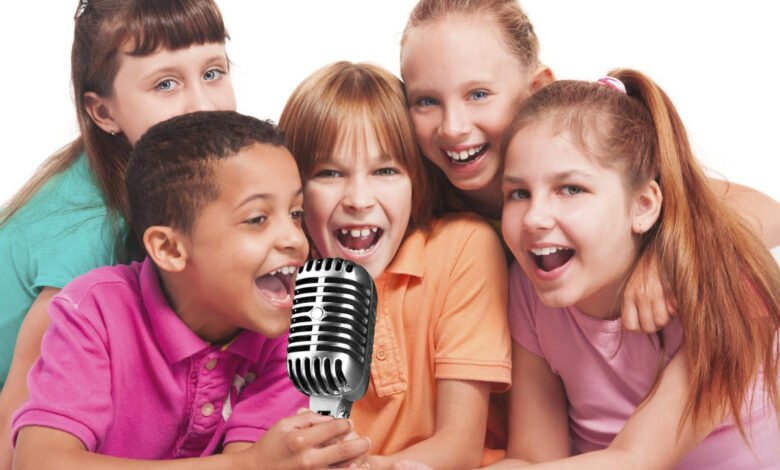International Karaoke Day: Bringing Music, Laughter, and Friendship to Life

Every year on July 19, the world pauses to celebrate International Karaoke Day, a joyful occasion that goes beyond music. While it may seem like just a day of light-hearted entertainment, karaoke has become a powerful tool for self-expression, emotional connection, and family bonding, especially for children. In a world where children’s voices are often overlooked or underestimated, karaoke reminds us that every child deserves to be heard.
The Origins of Karaoke and the Celebration
The word karaoke comes from Japanese, kara meaning “empty,” and oke from “orchestra.” Karaoke was born in the early 1970s in Kobe, Japan, when musician Daisuke Inoue invented a machine that allowed people to sing along to recorded music in the absence of a live band. Though Inoue never patented his invention, the karaoke machine revolutionized entertainment, offering everyday people the chance to step into the spotlight.
The choice of July 19 as International Karaoke Day is symbolic. The number “7” represents July, the “19” the day, and the “1” symbolizes unity, bringing people together as one global community through music. The date reflects the global embrace of a Japanese cultural creation that now thrives on nearly every continent.
International Karaoke Day has been embraced by karaoke communities, entertainment venues, schools, families, and online platforms around the world.
Karaoke as a Child-Centered Activity
For children, karaoke can be a gateway to emotional expression, creativity, and social connection. Children naturally gravitate toward singing. Whether singing songs learned in school or making up melodies in play, music is often their first language of joy.
Karaoke gives children a safe space to perform, imagine, and be themselves. It allows them to embody confidence without the pressure of perfection. A microphone, whether real or imagined, can transform a shy child into a bold performer, and a familiar song can become a powerful tool for storytelling, healing, and celebration.
The Cultural and Social Impact of Karaoke
Karaoke has become an integral part of family life and community events. In some cultures, it is central to celebrations such as birthdays and weddings; in others, it is a feature of everyday social life.
For children, karaoke offers a unique chance to connect with diverse musical traditions. Singing songs in multiple languages introduces them to global cultures, rhythms, and expressions. In multi-generational households, it becomes a bridge between parents, grandparents, and children, where everyone can take part equally.
The Educational and Developmental Benefits
The benefits of karaoke for children go far beyond entertainment. Scientific studies and child development experts alike recognize the following advantages:
1. Cognitive Development
Singing engages multiple areas of the brain. It strengthens memory, enhances concentration, and improves language processing. Even when reading lyrics off a screen, children exercise their reading and comprehension skills in a highly engaging format.
2. Emotional Regulation
Karaoke enables children to express their emotions in healthy ways. Choosing a song that resonates with them, whether joyful, reflective, or energetic—helps children process feelings they may not have words for. Singing can also reduce anxiety and support emotional well-being.
3. Social Confidence
Performing in front of others, even within the family, builds self-confidence and reduces fear of public speaking. It encourages children to take risks in a safe, supportive environment and fosters a sense of accomplishment.
4. Breath Control and Physical Relaxation
Singing requires controlled breathing, which in turn helps calm the nervous system. It promotes better posture and diaphragmatic breathing, both beneficial for physical health and emotional regulation.
5. Creativity and Self-Expression
Karaoke allows children to explore different styles of music, experiment with tone and rhythm, and perform in a way that reflects their unique personalities. Whether improvising movements or adding their own twist to a song, children use karaoke as a canvas for creativity.
How Families Can Celebrate International Karaoke Day
International Karaoke Day provides an opportunity to be intentional about creating safe and joy-filled musical experiences at home or in schools. Here are a few ways families and educators can celebrate:
a. Host a Family Karaoke Evening
Turn off the television and gather as a family to sing. Let children choose the songs, perform solos or duets, and cheer each other on. This strengthens family bonds and creates lasting memories.
b. Introduce Global Music
Use karaoke to explore songs from different cultures. Singing in other languages not only teaches children about global diversity but also builds empathy and curiosity.
c. Encourage Expression Through Music
Invite children to choose songs that reflect how they’re feeling. Follow up with gentle questions: “What made you choose that song?” or “How did it feel to sing that?”
d. Create a Talent Showcase
Schools, community centers, and religious institutions can mark the day with a child-friendly karaoke talent show. Focus should remain on fun and participation rather than competition.
Equipment and Tools
Families do not need expensive equipment to enjoy karaoke. A simple setup may include:
- A smartphone or tablet
- A karaoke app or YouTube lyric video
- A speaker (optional)
- A toy or real microphone
- A supportive audience
Free platforms like YouTube offer thousands of karaoke videos for children’s songs, popular music, and traditional folk tunes.
In conclusion, International Karaoke Day reminds us of something simple but powerful: the human need to be heard, to be joyful, and to be connected.




